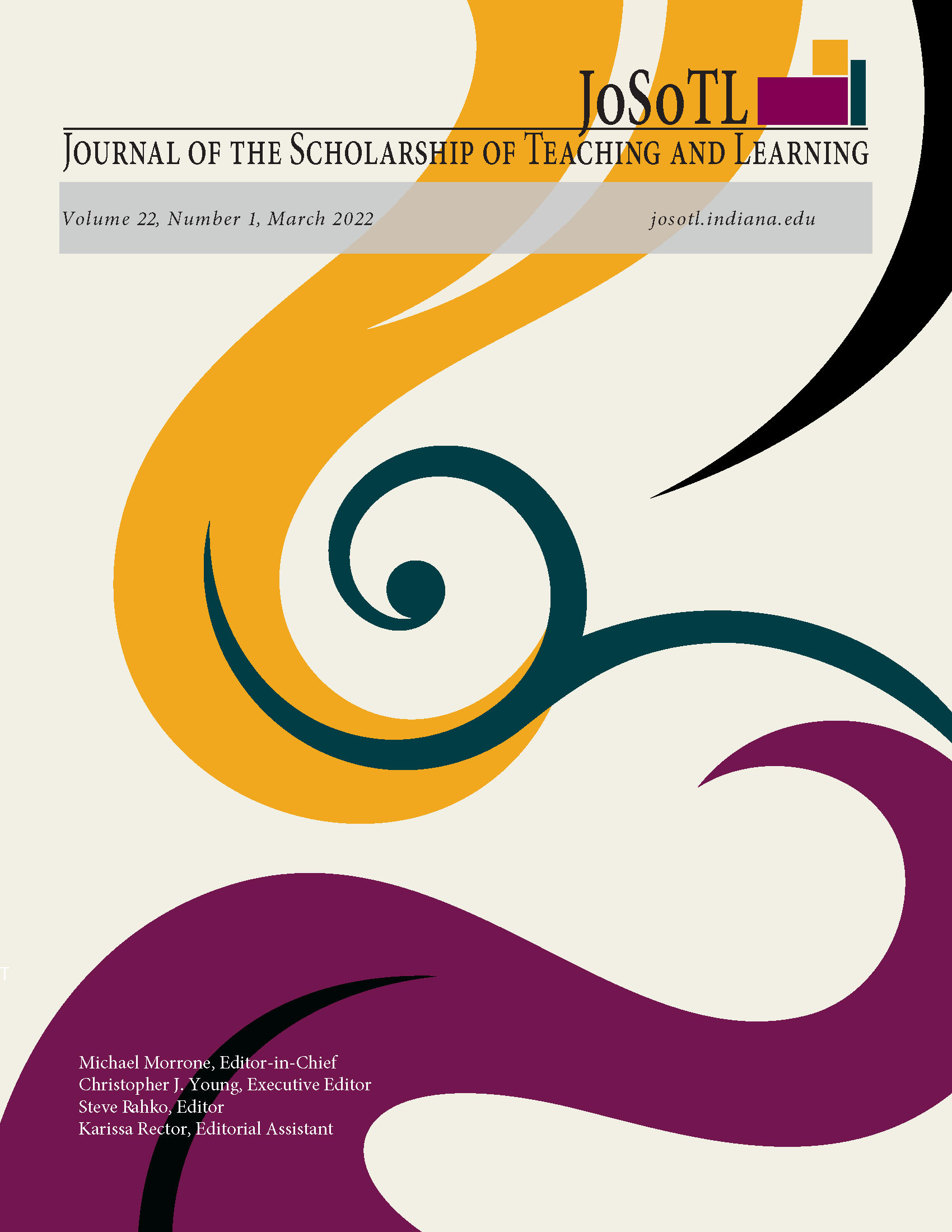Students’ Perception of the Classroom Environment: A Comparison between Innovative and Traditional Classrooms
Main Article Content
Abstract
As advanced classroom technologies are developed, more higher education institutions are building innovative classrooms. Previous studies have focused on students’ academic performances in innovative classrooms, but few compared students experienced between traditional and innovative classrooms. In comparing observations and self-reports of students taking similar classes in both traditional classrooms and innovative classrooms, we found that students in an innovative classroom were more satisfied with the classroom environment, sensed more community in innovative classrooms, and perceived these classrooms as more appropriate for their courses.
Downloads
Download data is not yet available.
Article Details
How to Cite
Britt, L. L., Ball, T. C., Whitfield, T. S., & Woo, C. W. (2022). Students’ Perception of the Classroom Environment: A Comparison between Innovative and Traditional Classrooms. Journal of the Scholarship of Teaching and Learning, 22(1). https://doi.org/10.14434/josotl.v22i1.30735
Section
Articles

This work is licensed under a Creative Commons Attribution 4.0 International License.
- Authors retain copyright and grant the Journal of the Scholarship of Teaching and Learning (JoSoTL) right of first publication with the work simultaneously licensed under a Creative Commons Attribution License, (CC-BY) 4.0 International, allowing others to share the work with proper acknowledgement and citation of the work's authorship and initial publication in the Journal of the Scholarship of Teaching and Learning.
- Authors are able to enter separate, additional contractual agreements for the non-exclusive distribution of the journal's published version of the work (e.g., post it to an institutional repository or publish it in a book), with an acknowledgement of its initial publication in the Journal of the Scholarship of Teaching and Learning.
- In pursuit of manuscripts of the highest quality, multiple opportunities for mentoring, and greater reach and citation of JoSoTL publications, JoSoTL encourages authors to share their drafts to seek feedback from relevant communities unless the manuscript is already under review or in the publication queue after being accepted. In other words, to be eligible for publication in JoSoTL, manuscripts should not be shared publicly (e.g., online), while under review (after being initially submitted, or after being revised and resubmitted for reconsideration), or upon notice of acceptance and before publication. Once published, authors are strongly encouraged to share the published version widely, with an acknowledgement of its initial publication in the Journal of the Scholarship of Teaching and Learning.
